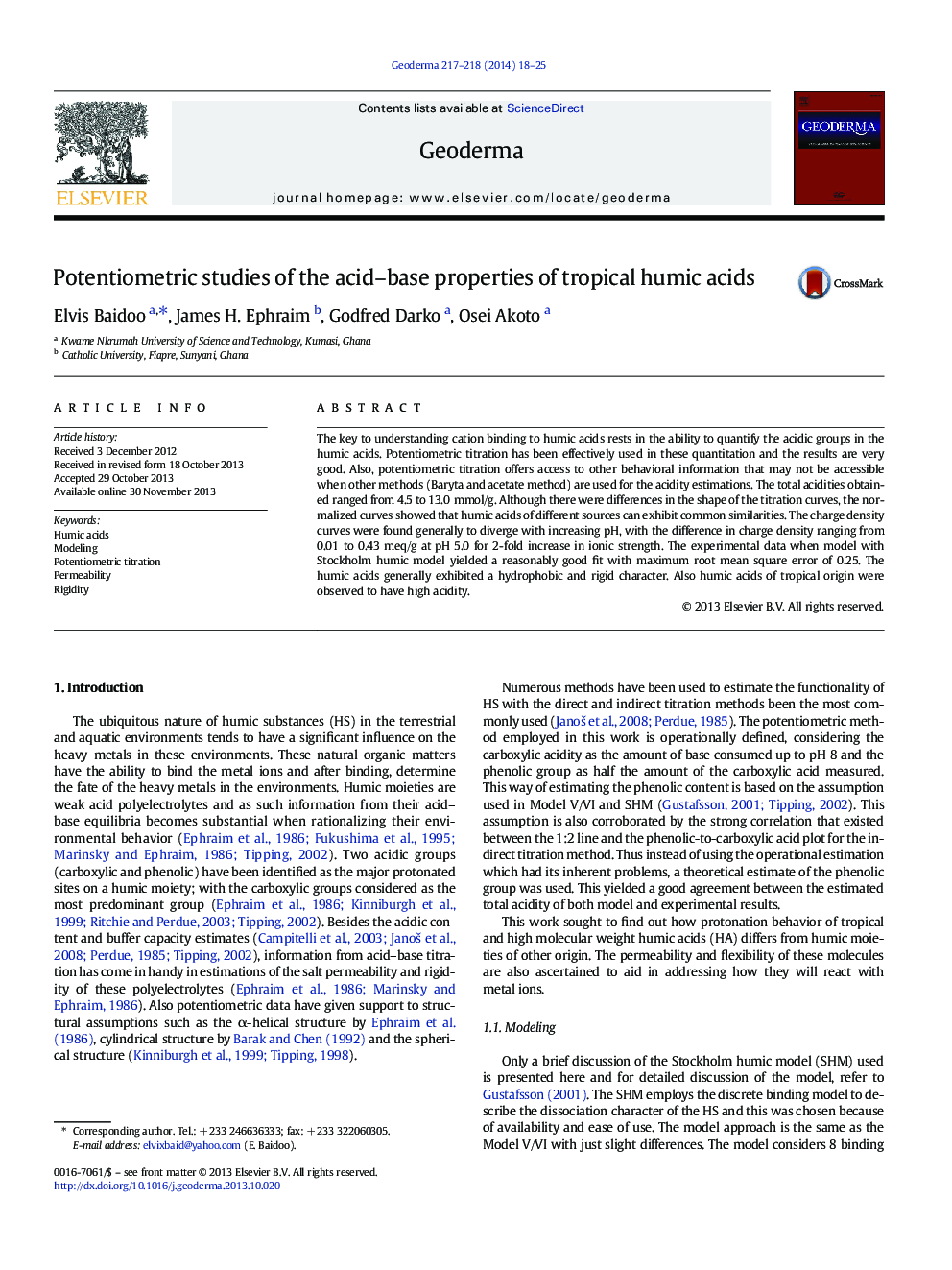| Article ID | Journal | Published Year | Pages | File Type |
|---|---|---|---|---|
| 4573409 | Geoderma | 2014 | 8 Pages |
•The titration curves resemble more of a diprotic acid curve.•The tropical humic acids exhibited high acidic content.•Ionic strength effect had a direct relation to the acidic content of the humic acids.•An assumption of phenolic content as half the carboxylic content was corroborated.•The humic acids behaved more as non-flexible hydrophobic polymers.
The key to understanding cation binding to humic acids rests in the ability to quantify the acidic groups in the humic acids. Potentiometric titration has been effectively used in these quantitation and the results are very good. Also, potentiometric titration offers access to other behavioral information that may not be accessible when other methods (Baryta and acetate method) are used for the acidity estimations. The total acidities obtained ranged from 4.5 to 13.0 mmol/g. Although there were differences in the shape of the titration curves, the normalized curves showed that humic acids of different sources can exhibit common similarities. The charge density curves were found generally to diverge with increasing pH, with the difference in charge density ranging from 0.01 to 0.43 meq/g at pH 5.0 for 2-fold increase in ionic strength. The experimental data when model with Stockholm humic model yielded a reasonably good fit with maximum root mean square error of 0.25. The humic acids generally exhibited a hydrophobic and rigid character. Also humic acids of tropical origin were observed to have high acidity.
